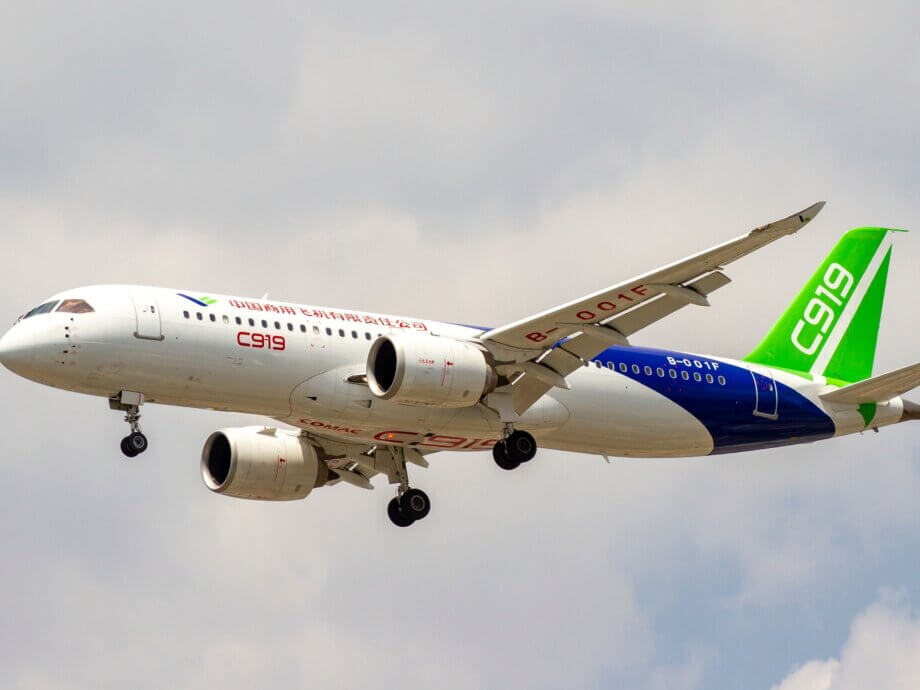China’s C919 Jet Eyes Africa: A New Era for the Continent’s Aviation Market?
The African aviation sector is on the cusp of a significant transformation as China’s homegrown C919 passenger jet, developed by the Commercial Aircraft Corporation of China (COMAC), prepares to enter the continent’s skies. With a capacity of 158 to 192 seats and ambitions to challenge the global duopoly of Boeing and Airbus, the C919’s arrival could reshape fleet strategies, operational costs, and connectivity for African airlines. But what does this mean for Africa’s aviation future, and what hurdles remain before the C919 can truly take flight across the continent?
- China’s C919 Jet Eyes Africa: A New Era for the Continent’s Aviation Market?
- Why Is the C919’s Entry into Africa So Significant?
- How Does the C919 Compare to Its Rivals?
- Certification: The Biggest Hurdle for African Operations
- Interest from African Airlines and Governments
- Infrastructure and Support: The Need for Localized Solutions
- Geopolitics and Supply Chains: A Double-Edged Sword
- What’s Next for the C919 in Africa?
- In Summary
Why Is the C919’s Entry into Africa So Significant?
The African aviation market is one of the fastest-growing in the world. According to Abderahmane Berthe, secretary-general of the African Airlines Association (AFRAA), air traffic on the continent is expected to double every 15 to 20 years. This growth is driven by a rising middle class, increased business and tourism travel, and a push for greater regional integration. However, African airlines have long struggled with high operational costs, limited fleet choices, and dependence on Western aircraft manufacturers.
The C919’s entry offers a potential alternative. As Berthe explains, the availability of Chinese-made aircraft could help African airlines diversify their fleets, reduce costs, and expand their networks. He notes:
“It would be good to establish a partnership with COMAC to diversify the value chain of aircraft on the continent.”
For African carriers, the C919’s similar equipment, engines, and avionics to existing Airbus and Boeing models could ease the transition and lower training and maintenance barriers. The aircraft’s range (up to 5,500 km) and seating capacity make it well-suited for both regional and some intercontinental routes.
How Does the C919 Compare to Its Rivals?
The C919 is a narrow-body, twin-engine jet designed to compete directly with the Airbus A320neo and Boeing 737 MAX—two of the world’s best-selling single-aisle aircraft. Like its Western counterparts, the C919 is powered by advanced CFM International LEAP-1C engines (a joint venture between GE and Safran), and features modern avionics and passenger comforts.
Key technical specifications include:
- Seating: 158–192 passengers
- Range: 4,100–5,500 km (standard and extended-range variants)
- Engines: CFM LEAP-1C turbofans
- Cabin: Configurable for business, premium economy, and economy classes
COMAC has already delivered C919s to major Chinese airlines, including China Eastern, Air China, and China Southern. The aircraft has logged thousands of commercial flights on domestic and, more recently, international routes such as Shanghai–Hong Kong.
Despite its technical similarities to Airbus and Boeing models, the C919 faces skepticism from some industry experts. As Steven Udvar-Hazy, executive chairman of Air Lease, remarked:
“The CCP [Chinese Communist Party] and COMAC are very interested in selling the C919, but it’s a one-way dating relationship.”
He and others point to the lack of international certification and support infrastructure as major obstacles to widespread adoption outside China.
Certification: The Biggest Hurdle for African Operations
Perhaps the most significant barrier to the C919’s entry into Africa is regulatory certification. While the aircraft is certified by the Civil Aviation Administration of China (CAAC), it lacks approval from the European Union Aviation Safety Agency (EASA) and the U.S. Federal Aviation Administration (FAA). These certifications are often required by African regulators and airlines to ensure safety, facilitate financing, and enable insurance coverage.
According to EASA, the certification process for the C919 could take three to six years, with completion unlikely before the late 2020s. The process involves rigorous evaluation of the aircraft’s design, systems, and operational performance, as well as extensive flight testing and documentation. EASA Director Florian Guillermet emphasized:
“Even with foreign-made parts, we must evaluate the entire system’s integration.”
This extended timeline means that, for now, the C919’s operations outside China and a handful of Southeast Asian countries will be limited. African airlines interested in the jet must wait until these regulatory hurdles are cleared.
Interest from African Airlines and Governments
Despite the certification challenges, interest in the C919 is growing among African carriers and governments. Kenya Airways, for example, has expressed interest in acquiring the aircraft for its planned Nairobi–Beijing route. Nigeria and the Republic of the Congo have also signaled intentions to purchase C919 jets, with Congo’s government announcing plans to acquire three aircraft by September 2024.
These moves reflect a broader trend: African airlines are seeking alternatives to the established Western manufacturers, both to diversify their fleets and to potentially negotiate better terms. The C919’s competitive pricing and operational efficiency are attractive, especially as Boeing and Airbus face order backlogs stretching years into the future.
However, as Julius Thairu, chief commercial and customer officer at Kenya Airways, noted, any purchase decision will depend on the aircraft’s ability to meet international safety standards and the availability of support infrastructure.
Infrastructure and Support: The Need for Localized Solutions
For the C919 to succeed in Africa, more than just certification is required. Berthe and other industry leaders stress the importance of establishing local maintenance, repair, and overhaul (MRO) facilities, as well as training programs for pilots and engineers. Without these, airlines risk higher costs and operational disruptions due to delays in obtaining spare parts or technical support.
COMAC has begun exploring the opening of international offices, including potential locations in Hong Kong and Singapore, to support its global expansion. The company’s experience with its smaller ARJ21 regional jet, which has found customers in Indonesia and Equatorial Guinea, may provide a blueprint for building after-sales support networks in new markets.
Still, as industry consultant Brendan Sobie points out, adding a new aircraft type to an airline’s fleet can complicate maintenance and operations, especially if the necessary infrastructure is not in place. Airlines must weigh these factors carefully before committing to the C919.
Geopolitics and Supply Chains: A Double-Edged Sword
The C919’s development is emblematic of China’s broader ambitions to reduce dependence on Western technology and assert itself as a global manufacturing powerhouse. However, the aircraft’s reliance on Western-sourced components—especially engines and avionics—creates vulnerabilities. Geopolitical tensions, such as U.S. export controls or trade disputes, could disrupt the supply of critical parts or delay certification processes.
At the same time, the C919’s emergence comes at a moment when both Boeing and Airbus are grappling with their own challenges, including safety concerns, supply chain disruptions, and production bottlenecks. This creates an opening for COMAC to position itself as a credible alternative, particularly in markets where China has strong commercial ties, such as Africa and Southeast Asia.
What’s Next for the C919 in Africa?
While the C919’s entry into Africa is not imminent, the groundwork is being laid for its eventual adoption. COMAC continues to ramp up production, with a target of 30 deliveries in 2025 and ambitions to reach 150 units annually within five years. The company is also actively engaging with African airlines and regulators to address concerns around certification, support, and training.
For African aviation, the arrival of the C919 could mark the beginning of a new era—one characterized by greater choice, increased competition, and potentially lower costs. However, realizing this potential will require patience, investment in infrastructure, and a commitment to meeting the highest international safety standards.
In Summary
- The C919, China’s first large passenger jet, is poised to enter the African aviation market, offering an alternative to Airbus and Boeing.
- African airlines are interested in the C919 for its competitive pricing, operational efficiency, and potential to diversify fleets.
- The biggest hurdle is the lack of EASA and FAA certification, which could take three to six years to obtain.
- Local infrastructure for maintenance, repair, and training is essential for the C919’s success in Africa.
- Geopolitical factors and supply chain dependencies present both opportunities and risks for COMAC’s global ambitions.
- The C919’s entry could reshape Africa’s aviation landscape, but widespread adoption will depend on overcoming regulatory and operational challenges.












